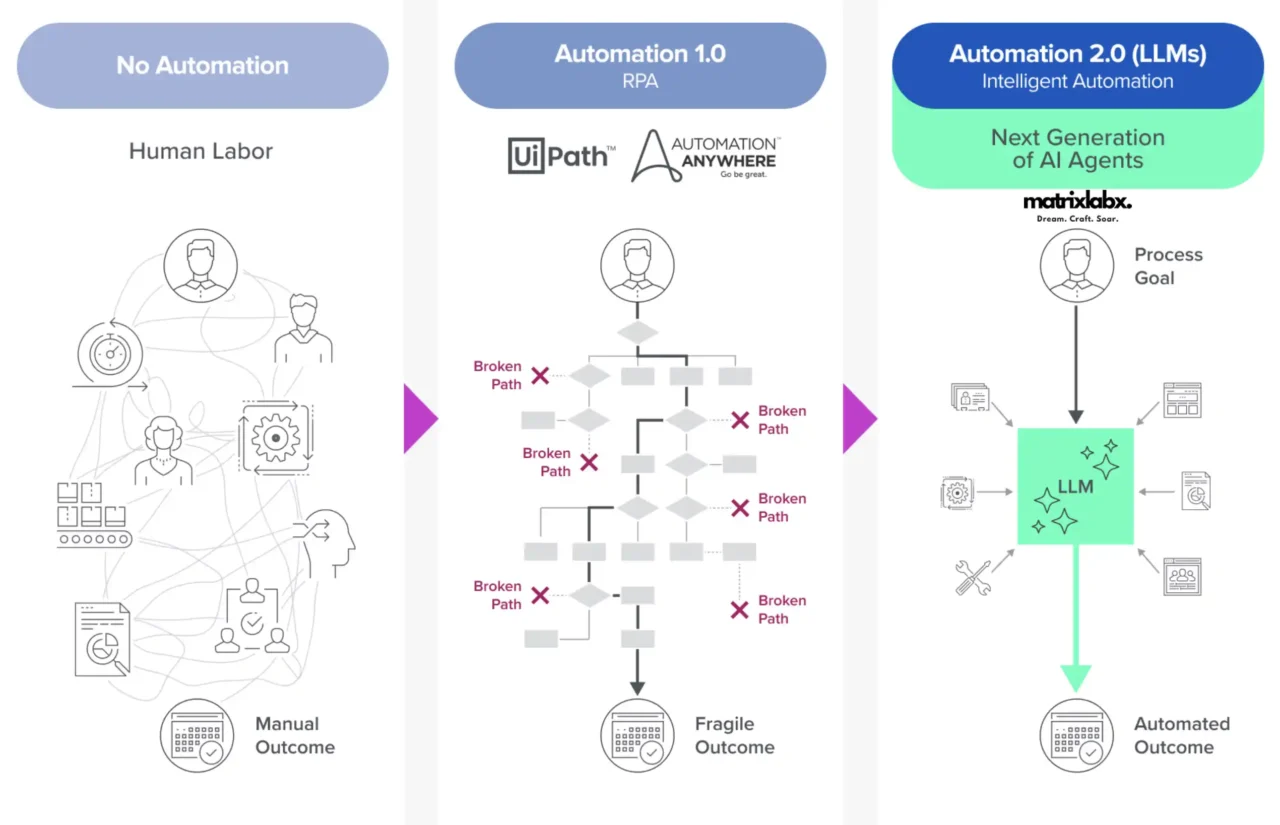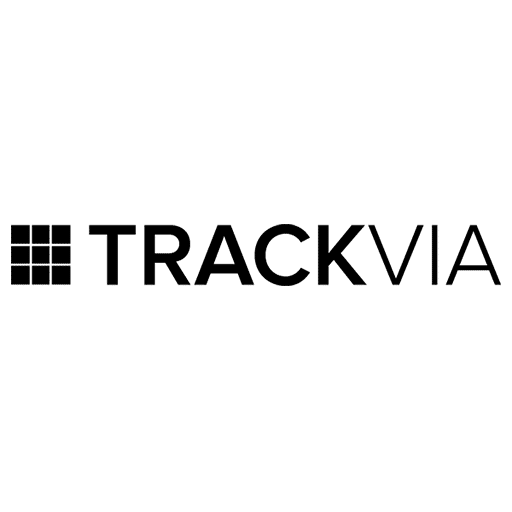How to Use AI to Automate Data Extraction and Save Time
Learn How to Use AI to Automate Data Extraction, Save Time, and Drive More Sales.
Marketing budgets are under increasing pressure—yet expectations for performance continue to climb. According to Gartner, marketing spend as a percentage of overall company revenue dropped to just 6.4% in 2021, down from 11% in 2020.
At the same time, McKinsey reports that marketers waste up to 30% of their time gathering and cleaning data, hours that could be spent on strategy and execution. When time equals money, inefficiency isn’t just frustrating—it’s expensive.
Manual data extraction is one of modern marketing operations’ most overlooked cost centers.
Teams often rely on outdated processes to pull information from multiple sources—CRM systems, web analytics, campaign tools, and sales platforms—to generate a weekly report. This fragmentation consumes valuable hours and increases the risk of human error, leading to flawed insights and missed opportunities.
AI-driven data extraction tools offer a direct solution to these inefficiencies. By automating marketing data collection, normalization, and categorization across platforms, AI reduces the time required for reporting and frees teams to focus on high-impact initiatives.
A Deloitte study found that companies using AI for marketing automation saw a 20% increase in campaign ROI and a 33% reduction in operational costs.
AI isn’t just a technical upgrade for marketing managers feeling the squeeze of high costs and limited resources—it’s a strategic imperative. Embracing intelligent automation is no longer optional; it’s the key to staying competitive while maintaining budget discipline.
Certainly! Here’s a clean, UX-optimized article section designed for marketing managers. It focuses on the often-overlooked marketing costs and includes compelling, unique statistics highlighting hidden expenses and inefficiencies that could impact sales.
The Hidden Cost of Marketing: What’s Draining Your Budget—and Sales
While marketing is essential for growth, many managers unknowingly bleed budgets through inefficiencies and underperforming investments.
It’s not just about spending too much—it’s about spending in the wrong places. Here’s what most marketing teams aren’t talking about, but should be.
- 32% of marketing budgets are spent on tools teams don’t fully use. According to a 2023 study by MarTech Today, nearly one-third of marketing software expenditures go unused due to a lack of training, poor onboarding, or tool overlap. That’s money left on the table—and sales opportunities missed.
- 48% of marketing campaigns exceed budget due to inaccurate forecasting. A report from Demand Metric found that nearly half of marketing campaigns run over budget because of poor data integration and misaligned KPIs. These overspends often don’t correlate with higher ROI, which means you’re not just spending more—you’re earning less per dollar spent.
- Teams spend 21% of their week manually compiling data from different platforms. Time is money. A 2024 survey by B2B Marketing Insights revealed that marketing teams spend over one-fifth of their week aggregating performance data. That’s time that could be spent refining strategy or improving customer experience.
- Only 27% of marketing content is reused, despite high production costs. Creating original content is expensive. But most of it gets used once and forgotten. A Content Marketing Institute study showed that less than a third of marketing content is repurposed, leading to unnecessary production costs and lower content ROI.
💡 Pro Tip: Audit your martech stack, streamline data reporting, and create a content repurposing strategy.
These small changes can free up budget and increase marketing efficiency, leading directly to more sales.
Let your budget work smarter, not harder.
Maximize Conversions Fast with Our PPC Campaign Launch!
Turn Clicks into Customers with a Rapid-Deployment Pay-Per-Click Strategy
Cut Marketing Costs Without Cutting Corners
How to Use AI to Automate Data Extraction and Save Time
Manual data collection is the most time-consuming and costly part. AI-powered automation changes the game.
By leveraging machine learning and intelligent algorithms, you can extract customer insights, market trends, and performance metrics in real time, without exhausting your team or budget.
Streamline Your Workflow
AI eliminates repetitive tasks and reduces human error.
Whether you’re pulling data from web analytics, CRM platforms, or social media, automation ensures fast, accurate, and scalable data extraction. This gives your team more time to focus on strategy, creativity, and growth.
Make Better Decisions, Faster
With cleaner data delivered faster, your marketing decisions become more precise.
AI tools can highlight actionable insights you might otherwise miss, optimizing campaigns, reducing spending, and improving ROI.
AI Integration in Marketing
Nearly 60% of marketers now rely on AI to streamline processes, generate content, and analyze data, a trend expected to grow in 2025, underscoring the role of AI-driven DMaaS platforms in modern marketing strategies. See pricing.
Why You Need Help from Vibe Marketing Experts at Matrix Marketing Group
AI tools are powerful, but the real value lies in knowing how to integrate them into your marketing strategy. Matrix Marketing Group’s vibe marketing services combine advanced AI capabilities with decades of strategic experience.
We help you cut costs, boost engagement, and create resonant campaigns. Let us handle the complexity so you can focus on building a brand people love.
How to Use AI to Automate Data Extraction and Save Time
What Success Looks Like
Increased Operational Efficiency
When AI is implemented effectively, data extraction processes become significantly faster and more accurate.
Teams spend less time on manual entry and more time on strategic initiatives. Businesses can expect a noticeable reduction in human error and improved data consistency across platforms.
Scalable Data Workflows
AI allows companies to handle larger volumes of data without scaling headcount at the same rate.
Whether processing invoices, scanning contracts, or pulling data from web sources, automation ensures consistent performance regardless of workload fluctuations.
Faster Decision-Making
With cleaner, faster-access data, stakeholders can make better-informed decisions faster.
Data extraction becomes possible in real time or near real time, enabling agile responses to operational, customer, or market demands.
AI Needs Quality Input
Automated data extraction is only as effective as the data it processes. Poor document quality, inconsistent formats, or missing metadata can impact output accuracy.
Businesses should expect an initial phase of data standardization and system training.
Expect an Iterative Setup Phase
AI models may require fine-tuning over time to align with specific business needs.
Successful implementations involve continuous feedback loops and regular updates to improve precision and handle new data formats.
Integration Takes Time with Using AI to Automate Data Extraction
While AI tools can be deployed quickly, integrating them into existing systems, such as CRMs, ERPs, or a data lake, requires planning.
IT teams should anticipate compatibility assessments, API configurations, and change management efforts.
Affordable SEO Solutions That Drive Real Results
Matrix Marketing Group Delivers Customized SEO Strategies with Transparent Pricing for Maximum ROI. See SEO Services.
Common Mistakes to Avoid
Skipping the Training Phase
Many teams underestimate the importance of training AI on their specific data sets.
Using generic, pre-trained models without customization often leads to subpar results.
Overreliance on Automation
While AI excels at repetitive tasks, human oversight remains essential, especially in the early stages. Relying solely on AI without quality assurance checks can introduce risks, especially in regulated industries.
Ignoring Compliance and Security
Automating data extraction doesn’t eliminate privacy and data governance responsibilities. Failing to align with GDPR, HIPAA, or industry-specific standards can result in legal and reputational damage.
Best Practices for Automating Data Extraction with AI

Choose the Right AI Tool
Select a platform that supports your data types and formats, such as PDFs, scanned images, emails, or structured documents. Look for features like OCR, NLP, and machine learning capabilities tailored to your industry.
Start with High-Value Use Cases
Focus on processes where time savings and accuracy improvements will deliver the greatest ROI. Common starting points include invoice processing, customer onboarding, and compliance reporting.
Establish a Feedback Loop with AI to Automate Data Extraction
Implement a continuous improvement cycle where AI outputs are reviewed and corrected. These feedback signals help refine the model, increasing accuracy over time.
Monitor Performance Metrics
Track KPIs like extraction accuracy, processing speed, error rates, and human intervention frequency. Use these insights to adjust workflows and improve outcomes.
Automating data extraction with AI is a powerful way to unlock time, improve accuracy, and scale operations efficiently. Businesses can transform data management into a competitive advantage by setting clear goals, preparing for the learning curve, and avoiding common pitfalls.
Your Blueprint for SEO Success in 2025
Whether you’re a business owner, marketer, or seasoned SEO professional, this guide is tailored to give you a competitive edge in the evolving digital landscape. Get SEO Pricing.
How to Use AI to Automate Data Extraction and Save Time
Step 1: Identify the Data Sources
Understanding where your data lives is the foundation of any automated extraction process.
Why This Step Is Critical
AI-powered tools can only extract what they can access. Pinpointing all relevant data sources — PDFs, emails, spreadsheets, databases, web pages — ensures a comprehensive automation strategy and eliminates time-consuming manual searches.
Tips for Success
- Audit your current workflows to uncover hidden or repetitive data retrieval tasks.
- Prioritize structured data (e.g., databases, spreadsheets) for faster initial wins.
- Map unstructured sources (e.g., scanned documents, web pages) to identify advanced AI needs such as OCR or NLP.
💡 Pro Tip: Use a visual mind map or flowchart to illustrate data movement and relationships across systems.
Step 2: Choose the Right AI Tools
The success of automation depends heavily on selecting tools aligned with your data types and business needs.
Detailed Guidance and AI to Automate Data Extraction
- Optical Character Recognition (OCR): Use tools like Tesseract, ABBYY, or Google Cloud Vision to extract text from images and scanned documents.
- Natural Language Processing (NLP): Tools like spaCy, OpenAI, or AWS Comprehend can extract entities, dates, or sentiments from unstructured text.
- Web Scraping AI: Solutions like Diffbot or Scrapy (with ML extensions) offer intelligent scraping capabilities for web-based data.
- RPA Integration: Combine AI with Robotic Process Automation platforms like UiPath or Automation Anywhere to streamline end-to-end processes.
Troubleshooting Common Issues
- Inconsistent formatting: Train or fine-tune AI models using sample data to improve accuracy.
- Poor OCR results: Before extraction, use higher-quality scans and preprocess images (e.g., de-skewing, noise reduction).
- Authentication barriers: Implement secure APIs or browser automation tools to access gated content.
🧩 Visual Aid: Create a tool capability matrix to compare options across accuracy, ease of use, cost, and scalability.
Step 3: Define Extraction Rules or Train AI Models
Once tools are in place, establish the logic or training models required to interpret and extract data accurately.
Supporting Details and AI to Automate Data Extraction
- Rule-Based Logic: For structured data, define clear parameters — e.g., extract invoice numbers from a specific column or tag.
- Machine Learning Models: For more complex cases, train models using labeled datasets that teach the AI what to look for and how to categorize it.
Substeps for Model Training
- Label your dataset: Tag examples of the data you want to extract.
- Split your data: Use 80% for training, 20% for validation.
- Evaluate model performance: Measure accuracy using precision, recall, and F1 scores.
- Iterate: Refine the model with new data or feedback as necessary.
📈 Visual Aid: Display a confusion matrix to illustrate model performance and pinpoint improvement areas.
Step 4: Automate the Workflow
Automation is achieved by connecting data extraction with downstream processes.
How to Implement
- Use APIs or RPA bots to feed extracted data into CRMs, ERPs, or databases.
- Trigger workflows automatically via email, file uploads, or webhook events.
- Set validation checkpoints to ensure the integrity of the extracted data before it moves forward.
Helpful Tools with AI to Automate Data Extraction
- Zapier / Make (Integromat): This is for light automation between SaaS tools.
- Apache Airflow or Prefect: For orchestrating more complex data pipelines.
- Power Automate / UiPath: For enterprise-level integrations with legacy systems.
Step 5: Monitor and Optimize
Even the best AI systems require ongoing tuning to maintain accuracy and performance.
Key Metrics to Track
- Extraction accuracy rate
- Time saved per task
- Error rate or exception frequency
- End-user satisfaction or NPS scores
Optimization Tactics
- Schedule regular reviews of extracted data for accuracy.
- Retrain models with updated or expanded datasets.
- Refine business rules as processes evolve.
📊 Visual Aid: Use a dashboard (via Tableau, Power BI, or Google Data Studio) to visualize performance trends and identify bottlenecks.
Step 6: Ensure Compliance and Security
AI-driven data extraction must align with data governance and security standards.
Essential Measures and AI to Automate Data Extraction
- Data encryption during extraction, transfer, and storage.
- Access controls restrict sensitive data to authorized personnel.
- Audit logs to track usage and modifications.
⇒ Compliance Tip: Verify that your AI tools comply with GDPR, HIPAA, or any industry-specific regulations relevant to your data.
By following these steps, businesses can harness AI to streamline data extraction, reduce manual labor, and drive faster decision-making with confidence.
Case Studies: How to Use AI to Automate Data Extraction and Save Time
Case Study 1: Streamlining Invoice Processing at Meridian Logistics
Challenge
Meridian Logistics, a mid-sized transportation firm, processed over 10,000 invoices monthly. Manual data entry led to a high error rate and over 400 person-hours spent on reconciliation and approvals.
Solution
By implementing an AI-powered data extraction tool integrated with their existing ERP system, Meridian automated invoice recognition, data parsing, and validation.
Results
- 85% reduction in invoice processing time
- 95% accuracy rate on extracted data
- $120,000 saved annually in labor costs
- Full ROI achieved in under 6 months
Case Study 2: Enhancing Compliance at Falcon Financial Services
Challenge
Falcon Financial faced regulatory pressure to maintain consistent and accurate client documentation.
Teams spent hours extracting key data from unstructured PDFs and scanned files.
Solution
AI-driven OCR and natural language processing (NLP) tools were deployed to scan, identify, and extract relevant compliance fields across thousands of legacy documents.
Results
- 70% decrease in compliance reporting time
- Near-instant document indexing and retrieval
- 60% increase in audit readiness
- Improved data consistency across departments
Case Study 3: Accelerating Claims Processing at Horizon Insurance
Challenge
Horizon Insurance struggled with long claims processing times due to manual data input from diverse document types, including handwritten forms and photos.
Solution
A machine learning-based data extraction engine was trained to process various claim documents, detect handwriting, and validate policy data in real-time.
Results
- Claims approval time reduced from 10 days to 2
- 40% fewer errors in claims data entry
- 30% increase in customer satisfaction scores
- Enabled 24/7 claim intake with AI-driven automation
Case Study 4: Optimizing Procurement Workflows at Ardent Manufacturing
Challenge
Ardent Manufacturing relied on supplier PDFs and email attachments for purchase order details, requiring significant manual effort to extract and log data into their supply chain system.
Solution
The company deployed an AI solution that automatically read incoming documents, extracted purchase order data, and synced it with procurement software.
Results
- 75% time savings on purchase order processing
- Real-time procurement status tracking
- Reduced procurement cycle time by 50%
- Minimized data mismatches with automated validation
Each of these companies leveraged AI data extraction to transform workflows, cut operational costs, and boost productivity, demonstrating that automation is not just a tech upgrade but a strategic advantage.




How to Use AI to Automate Data Extraction and Save Time
Recap: Streamlining Data Extraction with AI
Implementing AI for data extraction isn’t just about technology—it’s about efficiency, speed, and smarter decision-making.
Throughout this guide, we covered the foundational steps to help marketing managers embrace automation and reduce operational drag:
- Identifying data sources – CRMs, web forms, PDFs, or spreadsheets.
- Selecting the right AI tools, such as OCR software, NLP platforms, and machine learning APIs that fit your team’s needs and budget.
- Integrating with existing systems – ensuring compatibility with your current tech stack, including marketing platforms and analytics dashboards.
- Training and testing models: Feed AI systems with enough data to refine accuracy and continuously improve extraction quality through feedback loops.
- Monitoring and optimizing – using KPIs to evaluate performance and scaling efforts based on results.
These steps create a reliable framework to automate the repetitive, time-consuming aspects of data handling, allowing your team to refocus on strategy and customer engagement.
Reaffirming the Benefits with AI to Automate Data Extraction
Successfully automating data extraction isn’t just a time-saver—it’s a cost-cutter.
For marketing managers who feel their budgets are being stretched thin, AI delivers measurable ROI by:
- Reducing manual labor costs
- Minimizing human errors in data entry
- Accelerating campaign analysis and reporting
- Enhancing real-time decision-making with fresher data
- Freeing up talent to focus on creative and strategic tasks
Marketing budgets are tight, and every hour spent on manual data processing is an hour stolen from innovation.
AI puts you back in control, giving you the clarity and bandwidth to lead marketing strategies that drive growth rather than maintain the status quo.
Keep Practicing, Keep Optimizing with AI to Automate Data Extraction
The value of AI is in consistent application. Start with a small, high-impact data set. Automate, measure, and iterate. As your team becomes more confident with AI tools, scale up your efforts across departments and campaigns.
Technology is only as effective as your willingness to use it. The marketing cost is already high—don’t let outdated workflows increase it further. Use AI to streamline operations, empower your team, and elevate your marketing outcomes.
Keep pushing forward. Data extraction is just the beginning.


